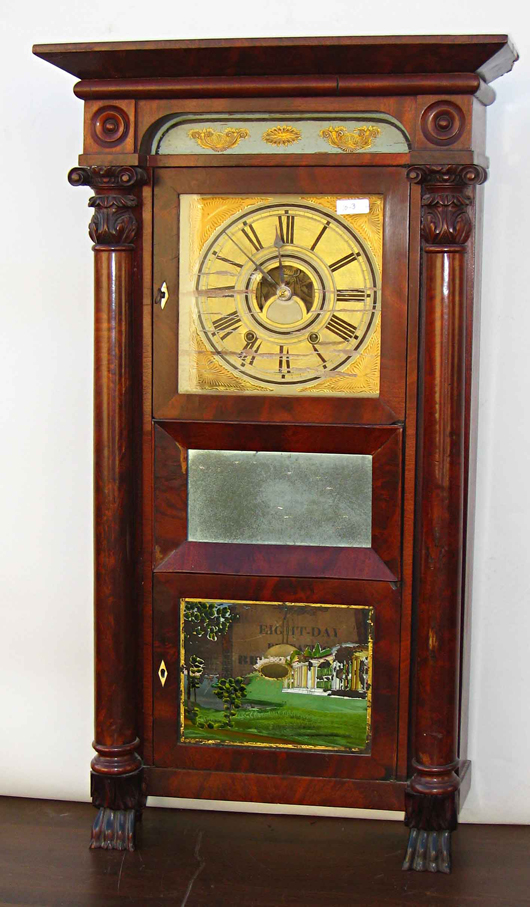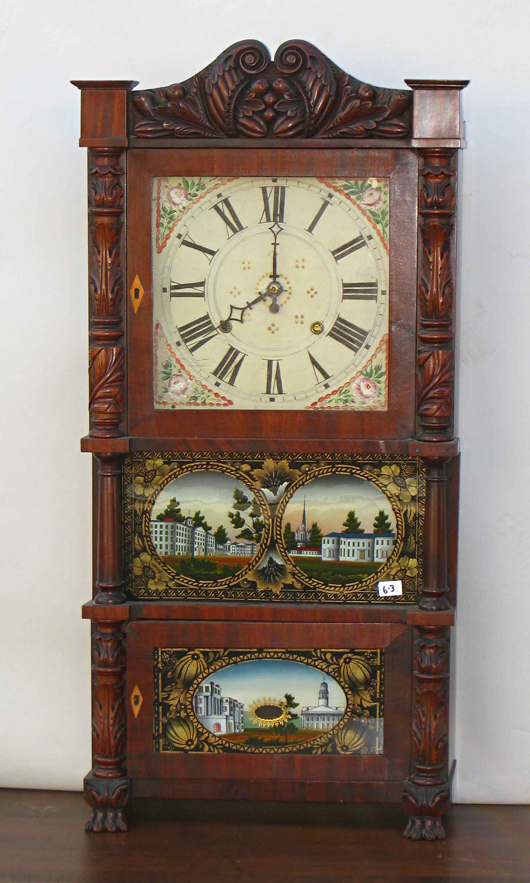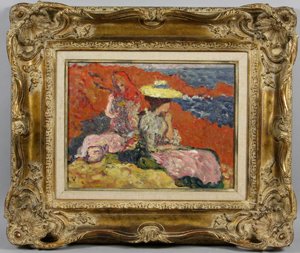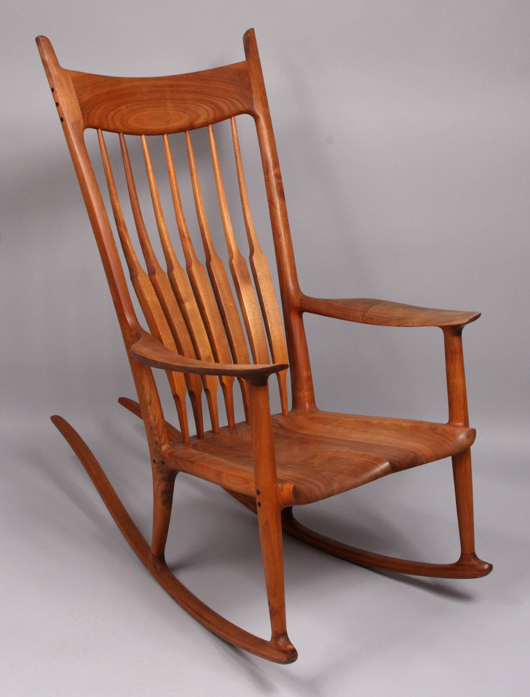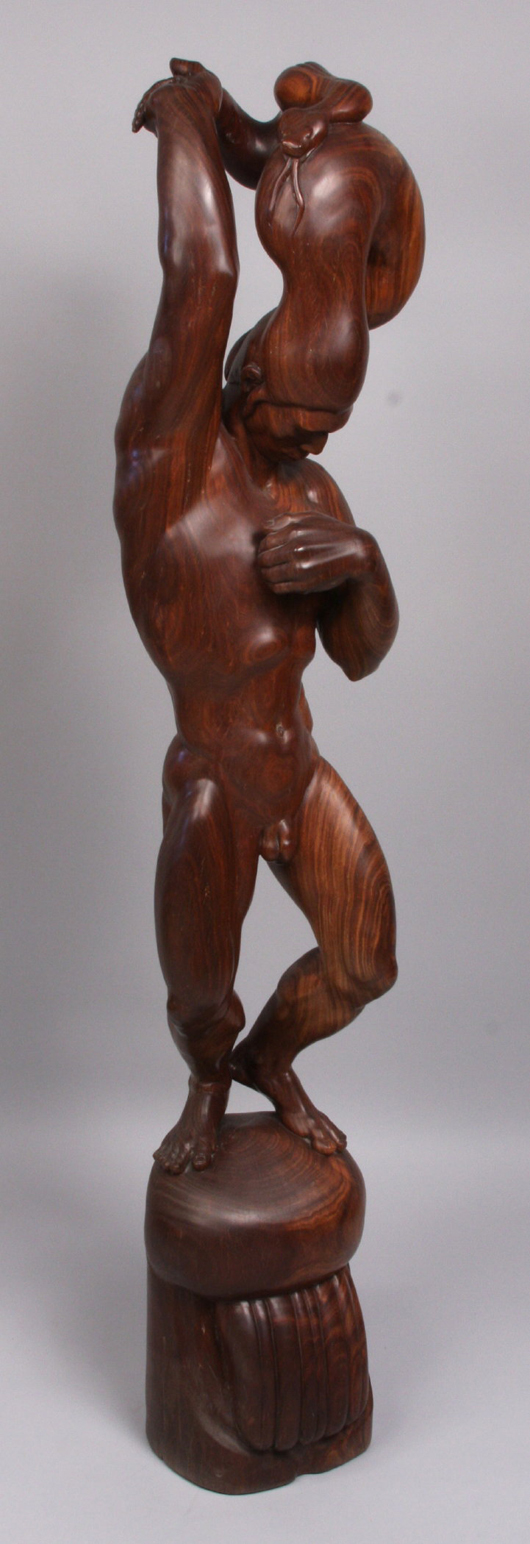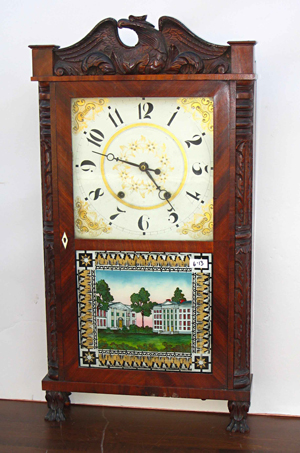
“This sale will feature all kinds of antique clocks,” said Gordon S. Converse. “Most are at least 125 years old and are mechanical, but examples of early electro-mechanical clocks will also be offered, along with electric clocks of the 20th century.”
The centerpiece of the sale promises to be the collection of the late James Grundy, who amassed one of the finest American shelf clock collections anywhere.
At least 75 examples of American shelf clocks, most of them from Grundy’s collection, will cross the block that day. Also offered will be several tall case clocks, including two from the American Federal era; some wall clocks, including two Biedermeier-era Austrian wall clocks; mantel clocks from America, England and the Continent; books on horology; and clockmakers’ tools and supplies.
“We’re already getting a positive response to the items in this auction, especially the shelf clocks,” Converse said. “We’ve had lots of views on LiveAuctioneers.com, which is facilitating online bidding. This is a unique chance for collectors to bid on a wide selection of fresh-to-the-market clocks that won’t be offered again for a long while.”
Just a few of the shelf clocks expected to generate much bidder interest include the following:
- A carved case shelf clock by Eli Terry Jr. featuring carved quarter columns flanking the full-length door, which has a reverse painted glass below the glazed square wood dial and carved paw feet. The crest mounted on top is a finely carved federal eagle.
- A Jerome & Darrow shelf clock made circa 1824-1826, having a look of reeded pilasters with neatly carved capitals, a scrolled top with hollow brass finials (an affectation from the earlier Eli Terry Pillar and Scroll design clock), and a later reverse painting of Independence Hall.
- An important striking looking-glass shelf clock signed “Sawin” (John Sawin, Boston, 1810-1863), with a stencil reverse painted decorated glass masking the dished dial above a looking-glass mounted within the base panel. Striking shelf clocks are rare, making them desirable to collectors.
- An early 19th-century American shelf clock with an original label that identifies C. & C.L. Ives as the manufacturer for David & Barber of Bristol, Conn. The clock has robust carving on the crests and half columns, two reverse paintings of two prominent buildings, and a painted wood dial.
- A faux finish, mahogany, gilt wood, carved and reverse painted triple-deck shelf clock made by the Forestville Manufacturing Co., of Bristol, Conn. The reverse painted glasses of architectural landscapes and the carved and gilt crest atop the case are unusual in their form. The clock also boasts ball feet.
New England’s clock makers in the early 1800s had little to work with in terms of technology to create clocks that would be affordable to the masses. But between 1820 and 1860, there was a proliferation of shelf clocks – so-named because they ended up being quite high and so couldn’t fit easily onto mantel pieces. Instead, they were displayed on shelves. Best of all they were affordable.
The skills of the craftspeople in New England’s cottage industries (such as reverse painting on glass, stenciling, wood carving and gold leaf skills) were all utilized in the making of these popular shelf clocks. Inside each one were clockworks that also showed off the inventive skills of the Yankee clock makers. Many had calendars, wooden gears, alarm devices and brass springs.
“This auction will feature shelf clocks in a variety of styles and sizes, by various makers,” Converse said. “Bidders will be treated to variations on seminal designs, real-life examples of original patents and crafts skills of the 19th century – enough to fill a museum. We’ll have clocks by the Terrys of Connecticut and many made in Bristol, Conn., the Yankee clock-making capital from 1800 to 1850.”
While shelf clocks are expected to take center stage at the auction, dozens of other pieces in a wide array of sizes and styles will also come under the gavel. These will include a 39-inch C. & N. Jerome eight-day repeating brass clock with scored dial; a rare miniature timepiece made by Silas Hoadley; and a circa 1900 Black Forest painted cast iron and tin “Clock Peddler” clock standing 11 inches tall.
Also offered will be a circa 1870s French industrial lighthouse clock, 22 inches tall, with a model Fresno light atop the structure oscillating on the half-seconds; a fine Federal tall case clock (circa 1790-1810), with a dense and dark solid mahogany case and a dial possibly from the shop of Nolan & Curtis; and a four-candlestick mahogany cased “wagon spring” steeple clock by Birge & Fuller.
The sale will be split into two parts to allow for a brief intermission. The first part will begin at 3:15 p.m. and conclude around 5:30. The second session will start at 6 p.m. Each session will feature 125 lots.
To view most of the catalog or to register online, log on to LiveAuctioneers.com.
The Italian-American Club, the auction site, is located at 301 W. Wayne Ave., in Wayne, Pa., 30 minutes west of Philadelphia.
For details call (610) 722-9004 or e-mail Gordon@ConverseClocks.com. To learn more about the company and the upcoming Dec. 29 auction, log on to www.AuctionsatConverse.com or www.ConverseClocks.com.
To order a catalog for the upcoming Dec. 29 clock vintage clocks and horology auction, send a check or money order for $12.50 to Gordon S. Converse & Co., 758 Mancill Road., Strafford, PA 19087.
Click here to view Gordon S. Converse & Co.’s complete catalog.
ADDITIONAL LOTS OF NOTE
